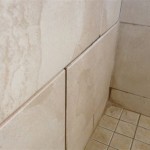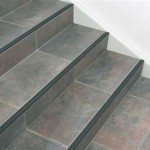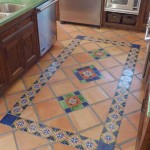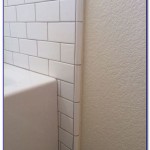Can You Tile Directly Over a Concrete Slab? A Comprehensive Guide
The question of whether tiling directly over a concrete slab is a common one for both seasoned professionals and novice homeowners embarking on flooring projects. The short answer is generally yes, it is possible. However, the feasibility and ultimately, the success of such an endeavor hinge on several critical factors concerning the condition of the slab and the preparation undertaken prior to tile installation. Failing to address these considerations can lead to costly and time-consuming complications down the line, including cracked tiles, grout failure, and even detachment from the substrate.
Concrete slabs provide a durable and stable foundation for many types of flooring, including tile. Their inherent strength and rigidity make them a popular choice for residential and commercial construction. Direct tiling offers advantages such as potentially reducing the overall floor height and minimizing material costs. However, these benefits are overshadowed if the necessary precautions aren't implemented. This article explores the critical aspects of preparing a concrete slab for direct tiling, highlighting potential pitfalls and offering guidelines for achieving a long-lasting and aesthetically pleasing tile installation.
Assessing the Concrete Slab's Condition
Before even considering commencing the tiling process, a thorough assessment of the concrete slab's condition is paramount. This assessment involves a meticulous inspection for cracks, unevenness, moisture content, and the presence of any contaminants that could impede the adhesion of the tile adhesive. Ignoring these factors is akin to building a house on a weak foundation – the final result will inevitably be compromised.
Cracks, regardless of their size, require careful attention. Hairline cracks may be superficial and easily remedied, while larger, more significant cracks could indicate underlying structural issues. Consult a structural engineer if there is any doubt about the integrity of the slab. Patching cracks with a cementitious patching compound is generally necessary, but the type of compound and repair method will depend on the crack's width and depth. Actively expanding cracks, particularly those wider than 1/8 inch, suggest slab movement, demanding a more robust repair solution, such as crack isolation membranes.
Unevenness in the slab is another common issue. Even slight variations in level can result in uneven tiles, lippage (where one tile edge sits higher than its adjacent tile), and ultimately, a less-than-desirable finished appearance. A level and a straightedge are essential tools for identifying high and low spots. Grinding down high spots and using a self-leveling underlayment to fill in low spots are common methods for creating a perfectly flat surface. The self-leveling compound must be compatible with both the concrete slab and the chosen tile adhesive.
Moisture within the concrete slab is a significant concern. Excessive moisture can compromise the bond between the tile adhesive and the concrete, leading to tile detachment and potential mold growth. A moisture meter is crucial for determining the moisture content of the slab. Generally, the moisture content should be below a certain threshold, as specified by the tile adhesive manufacturer. If the moisture level is too high, allowing the slab to dry naturally may be sufficient. However, in some cases, a moisture mitigation system may be necessary to prevent future problems. These systems create a barrier that prevents moisture from migrating through the slab and affecting the tile installation.
Finally, the presence of contaminants such as oil, grease, paint, or old adhesive residue can significantly hinder the adhesion of the new tile. Thoroughly cleaning the slab with appropriate cleaning agents and degreasers is essential. In some cases, mechanical abrasion, such as grinding or shot blasting, may be necessary to remove stubborn contaminants and create a properly prepared surface for tiling.
Preparing the Concrete Surface for Tiling
Once the condition of the concrete slab has been thoroughly assessed and any necessary repairs have been completed, the next step is to prepare the surface for tiling. This preparation involves cleaning, profiling, and priming the concrete to ensure optimal adhesion of the tile adhesive. Neglecting these steps can lead to premature tile failure, regardless of the quality of the tiles or the adhesive used.
Cleaning is the foundational step in surface preparation. It involves removing all loose debris, dust, and contaminants from the concrete surface. This can be accomplished through sweeping, vacuuming, and scrubbing with a suitable cleaning solution. The choice of cleaning solution will depend on the type of contamination present. For example, a degreaser is necessary to remove oil or grease, while a specialized cleaner may be required to remove paint or old adhesive residue. After cleaning, the slab should be thoroughly rinsed with clean water and allowed to dry completely.
Profiling refers to creating a slightly rough surface on the concrete slab to enhance the mechanical bond between the adhesive and the concrete. This can be achieved through various methods, including grinding, acid etching, or scarifying. Grinding involves using a concrete grinder equipped with diamond grinding pads to create a uniform surface texture. Acid etching involves applying a diluted solution of muriatic acid to the concrete surface to chemically dissolve a thin layer of the concrete, creating a rough profile. Scarifying involves using a machine with rotating blades to create grooves in the concrete surface. The choice of profiling method will depend on the type of concrete, the desired level of roughness, and the available equipment. It's crucial to follow the manufacturer's instructions for each profiling method to avoid damaging the concrete slab.
Priming is the final step in surface preparation. A primer is a liquid coating that is applied to the concrete surface to improve the adhesion of the tile adhesive. The primer creates a bridge between the concrete and the adhesive, ensuring a strong and durable bond. Different types of primers are available, each designed for specific applications. Some primers are designed to improve adhesion on porous surfaces, while others are designed to seal the concrete and prevent moisture from migrating through the slab. It's essential to choose a primer that is compatible with both the concrete and the chosen tile adhesive. Apply the primer according to the manufacturer's instructions, ensuring a uniform coating over the entire surface. Allow the primer to dry completely before applying the tile adhesive.
Selecting the Appropriate Materials
Choosing the right materials for tiling directly over a concrete slab is as crucial as proper preparation. The selection of the tile adhesive (mortar), grout, and the tiles themselves must consider the specific characteristics of the concrete slab, the intended use of the tiled area, and the environmental conditions. Incorrect material selection can negate even the most meticulous preparation efforts and lead to tile failure.
The tile adhesive, often referred to as mortar, is the critical link between the tiles and the concrete slab. It is responsible for bonding the tiles securely to the substrate and must be strong enough to withstand the stresses of everyday use. Modified thin-set mortars are generally recommended for tiling over concrete slabs. These mortars contain polymers that enhance their flexibility, adhesion, and resistance to moisture. When selecting a modified thin-set, consider the type of tile being used (e.g., porcelain, ceramic, natural stone) and the size of the tiles. Larger tiles require a mortar with higher shear strength to prevent slippage and detachment. Also, ensure the chosen mortar is compatible with the chosen primer.
The grout fills the spaces between the tiles and serves to protect the tile edges from chipping and damage. It also contributes to the overall aesthetic appearance of the tiled surface. Cement-based grouts are commonly used for tiling over concrete slabs. These grouts are typically composed of cement, sand, and pigments. Epoxy grouts offer superior stain resistance and durability compared to cement-based grouts, making them a good choice for high-traffic areas or areas prone to spills. However, epoxy grouts are more expensive and require more skill to install. Regardless of the type of grout chosen, it's essential to seal the grout lines after installation to prevent staining and moisture penetration. The grout sealer should be compatible with the grout type and applied according to the manufacturer's instructions.
The choice of tiles is primarily based on aesthetic preferences and the intended use of the tiled area. However, certain tile characteristics are more suitable for direct tiling over concrete slabs. For example, large-format tiles often require a perfectly flat and level substrate to prevent lippage. Natural stone tiles may be more susceptible to moisture damage and require sealing both before and after installation. Porcelain tiles are generally more durable and water-resistant than ceramic tiles, making them a good choice for high-traffic areas and areas exposed to moisture. Consider the thickness of the tiles as well. Thicker tiles are generally more resistant to cracking and can better accommodate minor imperfections in the concrete slab. Thoroughly research the characteristics of different tile types and choose tiles that are appropriate for the specific application.

How To Install Tile Over Concrete Greenbuildingadvisor
:max_bytes(150000):strip_icc()/can-you-install-tile-directly-on-concrete-1822600-04-458f7bb6c78348c1835cf8054ef36553.jpg?strip=all)
How To Install Tile Over Concrete
How To Install Tiles On Concrete Floors Stonesuper
How To Tile Onto Concrete Floors Porcelain Super

Can I Set Tile Directly Over A Concrete Floor
:max_bytes(150000):strip_icc()/can-you-install-tile-directly-on-concrete-1822600-01-8a89ceab1a274fb8ac81890ab7fc6b1b.jpg?strip=all)
How To Install Tile Over Concrete

How To Lay Tile On Concrete With Pictures Wikihow

Sound Dampening Ceramic Tile Over A Concrete Floor Fine Homebuilding

Covering Concrete Slab Installation Dektektile Luxury Tile Decking Material

Can I Set Tile Directly Over A Concrete Floor
Related Posts








